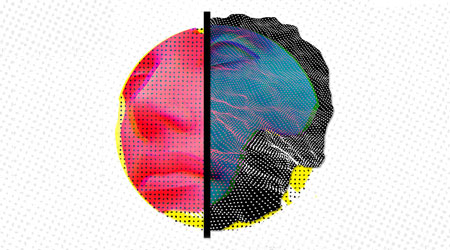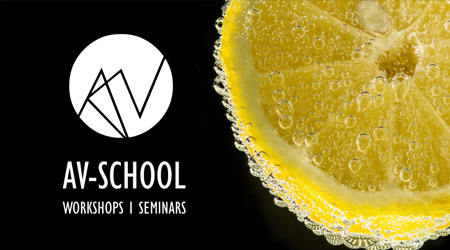Acoustics and Psychoacoustics
Teaching Staff: Katerelos Dionysios
Course Code: AUD120
Course Category: General Background
Course Type: Compulsory
Course Level: Undergraduate
Course Language: Greek
Delivery method: Lectures
Semester: 1st
ECTS: 6
Teaching Units: 4
Teaching Hours: 4
E Class Page: https://opencourses.ionio.gr/modules/contact/index.php?course_id=199
Teaching Structure:
| Activity | Semester Workload |
|---|---|
| Lectures | 26 |
| Lab Practice | 13 |
| Tutoring Lectures | 13 |
| Literature Study and Analysis | 64 |
| Practice and Preparation | 34 |
| Course Total (ECTS: 6) | 150 |
Prerequisite to / Recommended to: AUD623
General description of acoustic science: history and briefing of its basic topics and fields. Examples of using acoustics’ concepts in art and technology. Definition of sound and the difference between sound and noise. Sound production and propagation. Fundamental oscillation parameters: period, frequency and wave length. Foundations on sound physics: sound as a wave signal. Measuring sound: pressure, intensity and acoustic power. Sound wave propagation phenomena. Logarithmic sound perception, measuring sound using decibels: definition of level measurements. Sound level meters. The graphical representation of acoustic perception. Spectral analysis and frequency-domain signal representation: additive synthesis and music notes. Using filters to process sound. The physiology of human listening mechanism. Subjective sound perception: loudness, pitch and timbre definition. Description and application of the masking effect. Auditory illusions. Spatial sound perception and binaural hearing. The precedence effect. Foundations of room acoustics.
"Acoustics and Psychoacoustics" is offered as a mandatory course for all undergraduate students during the first semester of their studies at the department of audio and visual arts. The course overall aim is to provide an introduction on foundations of acoustics and psychoacoustics, with emphasis on the sound perception mechanism. Focus is particularly given on the sound itself as a wave signal, and the ways that the objective human listening parameters affect the subjective acoustic perception.
The successful attendance of the course offers the ability to the corresponding students to:
- perform basic calculations for estimating sound level measurements,
- describe the sound wave propagation phenomena within the framework of everyday applications,
- discriminate the qualitative and quantitative characteristics of the frequency domain representation of acoustic signals,
- outline the conceptual limits between acoustics and psychoacoustics,
- discriminate the difference between objective and subjective measurements,
- recognize the impact of psychoacoustic mechanisms on human perception.
Week #1: General description of acoustic science. Historical evolution and fundamental fields briefing.
Week #2: Examples of using acoustics’ concepts in digital art, sound art and modern audiovisual technological and creative applications.
Week #3: Sound and auditory events. Discussion on the difference between sound and noise. Sound production and propagation in the free field. Fundamental oscillation parameters: period, frequency and wave length. Human listening in the frequency domain.
Week #4: Sound physics overview. Working with frequency bands. Qualitative modelling of sound. Definition and measurement of acoustic pressure. Other sound measurements: intensity, propagation speed and acoustic impedance.
Week #5: Dominant wave propagation phenomena: diffraction and refraction. How the atmospheric temperature affects sound propagation. Reflection and diffusion. Principles and applications of the Doppler effect.
Week #6: Sound source types: simple monopoles and dipoles. Basic characteristics of a sound source: the acoustic power. Propagation in the free field, as well as in the diffuse field. The mathematic relation between sound intensity and pressure in the free field.
Week #7: The human listening dynamic range concept. Logarithmic perception: The Weber – Fechner law. Using decibels to measure sound and to define levels of measurements. Common ranges of level measurements. The map of human listening perception.
Week #8: Summing multiple, concurrently active acoustic sources. Sound and noise level meters: typical parameters and technical specifications. Applying psychoacoustic weights (A, B, C and D) for optimal sound level measurement.
Week #9: Sound as a composite signal. Calculating the spectrum of periodic signals. Representing sound in the frequency domain. Fourier analysis theory and examples. For typical sound signals. The phase component. Theory of synthesizing harmonic sounds. Defining musical notes in the frequency domain. Systems for spectral analysis. Using filters to process sound.
Week #10: Subjective sound perception. Human listening physiology. The subjective human response to the level of sound: loudness, definition and subjective units. Definition of the minimum audible field and the masking effect.
Week #11: Critical bands and filters. The subjective hearing response to the frequency of sound: the pitch measurement. Evaluating subjective just noticeable differences. Timbre: definition and additive synthesis applications. Auditory illusions demonstrations.
Week #12: Binaural hearing: the authenticity concept. Achieving authenticity using 3D sound projection technologies. Foundations of duplex theory and basic stereo panning. The precedence effect. Fundamentals of binaural rendering.
Week #13: An introduction to room acoustics. Defining the room acoustics behaviour in mathematical terms. Reflections, reverberation and echoes in a glance. Definition of the room impulse response and the reverberation time.
Everest, F. A. (2001). Master handbook of acoustics.
Temkin, S., & Temkin, S. (1981). Elements of acoustics (pp. 228-246). New York: Wiley.
Digital / multimedia content is offered to all students that covers all the theoretical and practical concepts covered by the course. This content is accessible via the institutional e-class platform. Additional laboratory work allows better understanding of specific theoretical terms and concepts. The students are encouraged to perform several recordings in urban environments and sound level measurements.
Enhanced by multimedia content.
The learning process is supported by the asyncrhonous e-learning platform e-class.
Course evaluation is performed by written exams.
Back
| << | < | April 2024 |
> | >> | ||
| Mo | Tu | We | Th | Fr | Sa | Su |
1 |
2 |
3 |
4 |
5 |
6 |
7 |
8 |
9 |
10 |
11 |
12 |
13 |
14 |
15 |
16 |
17 |
18 |
19 |
20 |
21 |
22 |
23 |
24 |
25 |
26 |
27 |
28 |
29 |
30 |
|||||



 Acoustics and Psychoacoustics
Acoustics and Psychoacoustics




